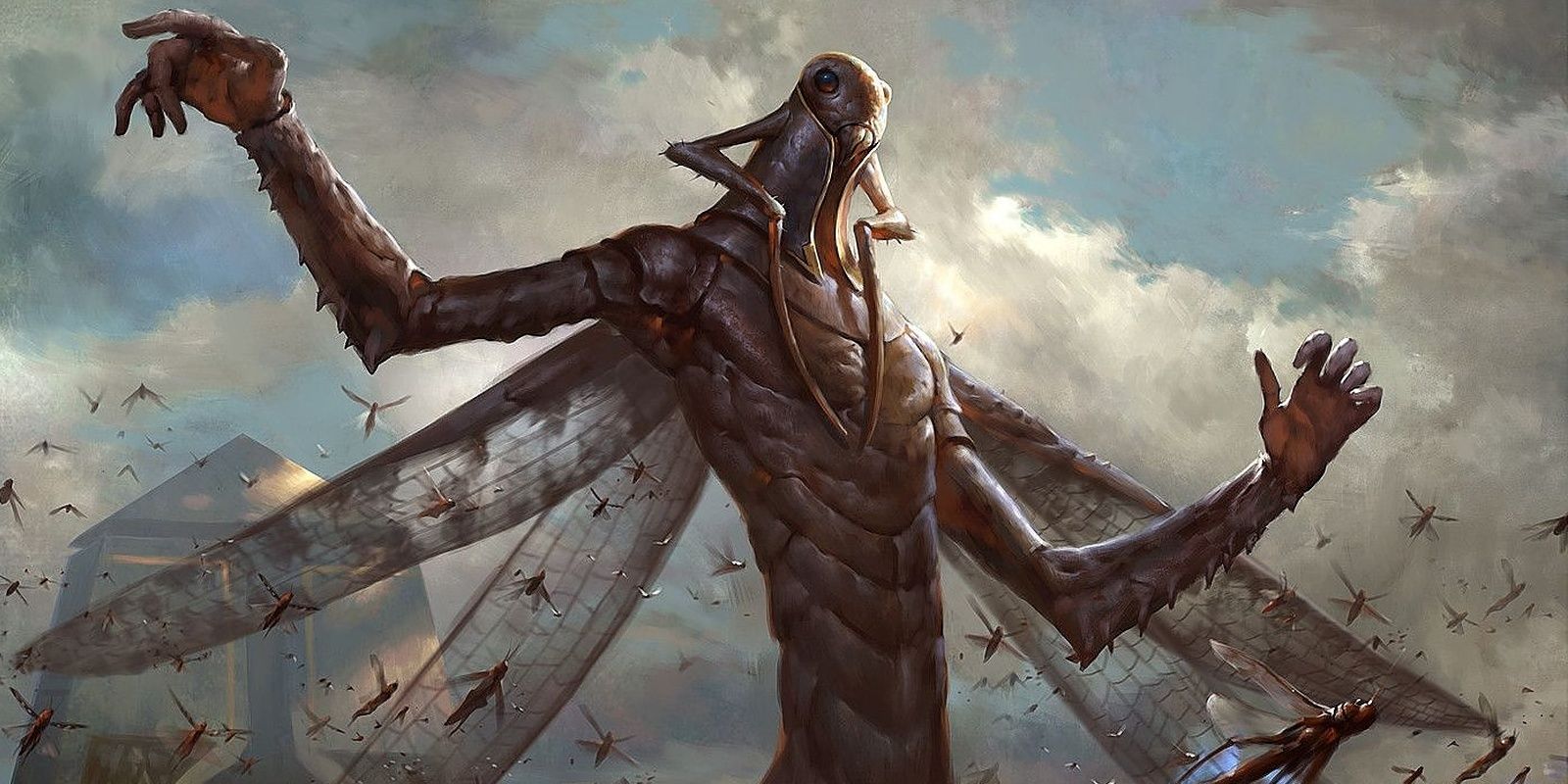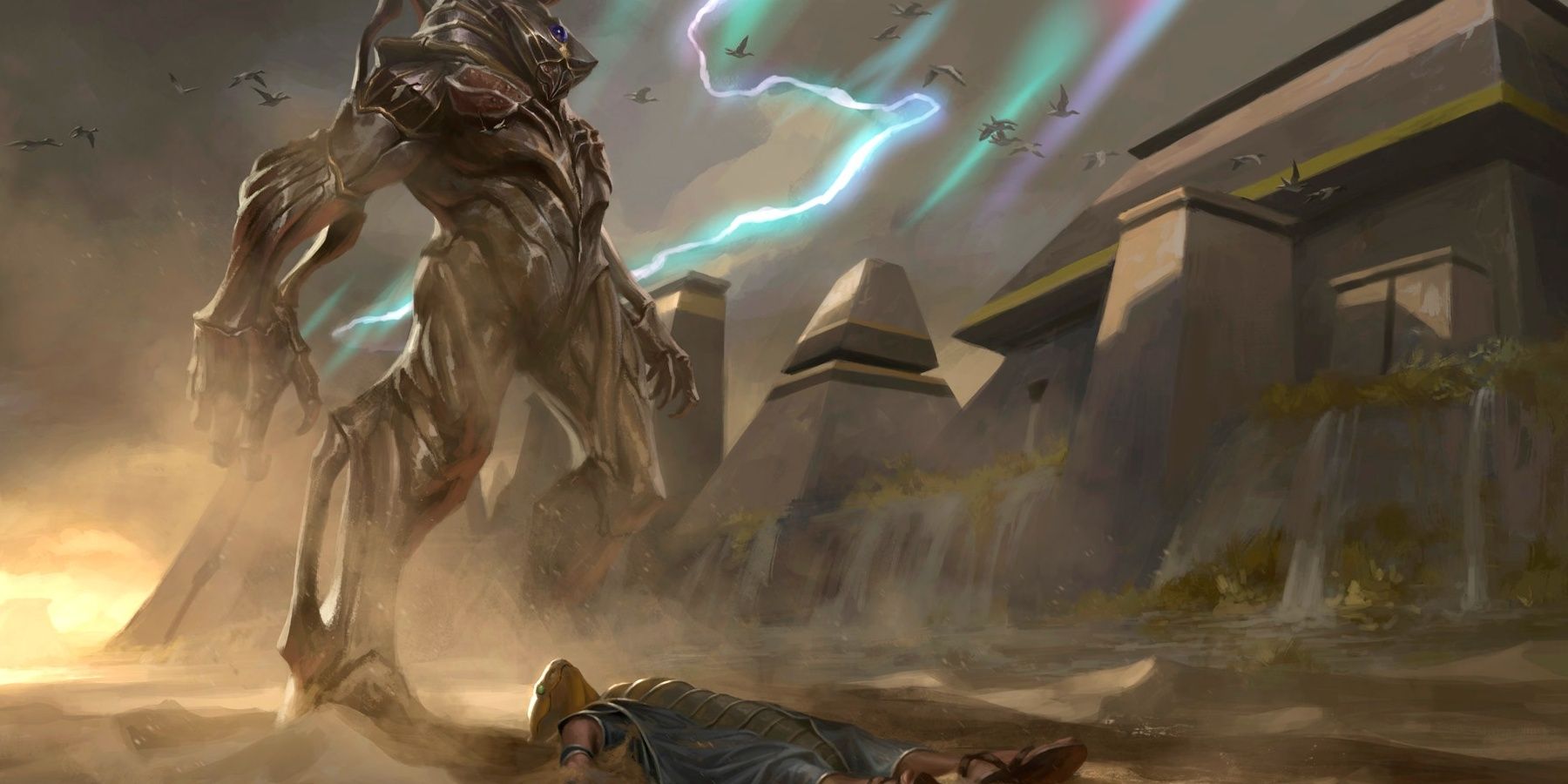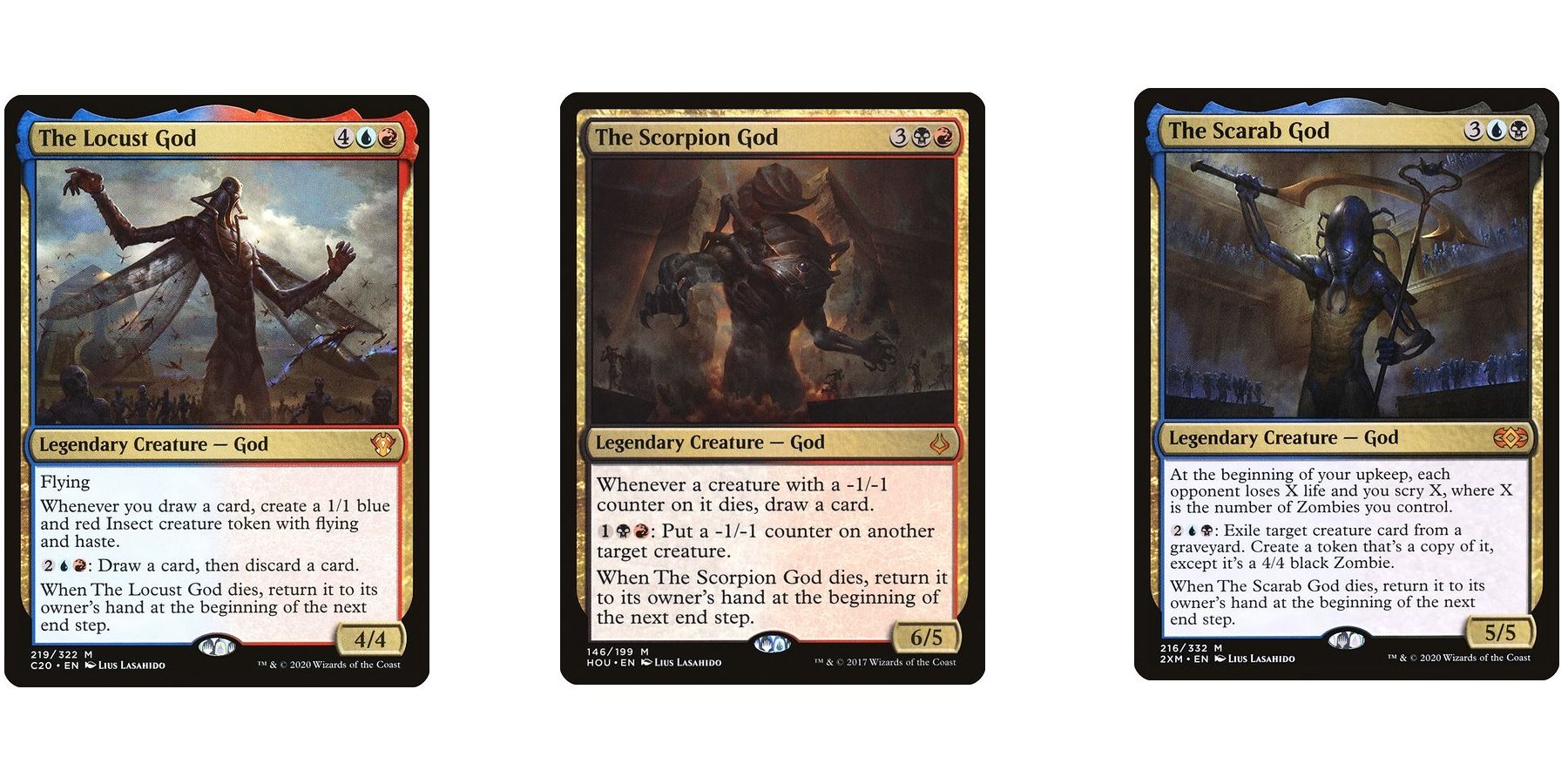In Magic: The Gathering, the people of the desert plane of Amonkhet realized far too late that their entire world was one giant ploy. The great city of Naktamun and the combat trials were not a gateway to the glorious afterlife, but rather a giant factory to create Eternal zombie warriors for Nicol Bolas, the ultimate planeswalker. And Bolas had three secret gods to call upon to help.
The people of Amonkhet were quite familiar with the five mono-colored Gods of the combat trials, from Okertra to Rhonas, but they were taken by surprise when three more Gods arrived at the Hekma barrier surrounding the city and tore it down. The city soon followed.
The Day of Reckoning
For millennia, the people of Naktamun were comfortable with their lot in life, paying tribute to the five gods while cheering on the warriors who fought in the glorious combat trials in the city's cozy confines. What they didn't know was that each combat trial winner would have their body carted off to a secret facility outside the city, and it was not the afterlife. Instead, the body would be taken to a massive crypt where three hidden Gods resided, one each for locusts, scarabs and scorpions. These gods only embodied blue, black and red mana to match their god-pharaoh, and they were loyal only to Nicol Bolas and his dreams of conquest.
At this facility, far out in the wastelands where none dared tread, the three hidden gods prepared for the prophesied day when they would storm Naktamun and tear it to the ground. That city's days were numbered, and when the second sun took its position between the giant horns in the land, the day finally came. The three hidden Gods and their blue-armored Eternal minions marched in force toward Naktamun.
First, there was the Hekma barrier, the great magic shield that protected the city. Taking this down was the Locust God's job. It summoned a massive swarm of vicious, flying insects that chewed away at the barrier until it fell, leaving the city exposed as the locusts swarmed all about and throwing it into chaos. Next came the Scorpion God, which was a lumbering assassin. It confronted each of the mono-colored Gods and attacked them, using its deadly stinger to destroy the seemingly divine and invincible patrons of the combat trials. Rhonas, Oketra, Bontu and Kefnet all died at the Scorpion God's hands; only Hazoret, the red God of zeal, managed to escape this fate.
Last up was the Scarab God, who served as the great general of the Eternal zombie army. It led the charge, coordinating its many troops as they systematically slaughtered the people of the city. By now, Bolas' army was large enough, and he was ready to invade other planes with it. Naktamun no longer served a purpose, so Bolas made sure to wipe it out to ensure no survivors could warn others of his plans. Still, the city's people fought back as best they could, and a native planeswalker named Samut did her best to lead the counterattack. She would later planeswalk to the city-world of Ravnica to face Bolas and the Eternals once again. Her city had fallen, but the fight was not over.
The Three Gods in the Game
Each of these three Gods appears in the Hour of Devastation expansion set. They are all legendary mythic rare creatures (like the other five gods) and are among the few multicolored cards In the Amonkhet block. Like other Gods, they represent immortality somehow; in this case, they can go back to their owner's hand if they die. However, this won't work if they are exiled or discarded. Although they lack indestructible like most other gods (including the Gods of the Theros block), these three have no particular conditions for attacking and blocking, and they have impressive power/toughness.
More importantly, these gods have triggered and activated abilities that synergize with each other. The Locust God can loot to refresh the hand and create 1/1 flying creature tokens, while The Scorpion God can put -1/-1 counters on creatures and draw cards when they die. Arguably, The Scarab God is the best. It can exile creatures from the graveyard to create a 4/4 version of it, and then scry and make opponents lose life on each of its controller's upkeeps at no additional cost.
Each of these three Gods can be used as a Commander since they have powerful abilities, two colors and legendary status. The Locust God works well in a spell-oriented deck that can draw and loot a lot, or it might be slotted into a similar deck, such as for Melek, Izzet Paragon. Those 1/1 Insects will add up fast. The Scorpion God works well with decks that use -1/-1 counters, and The Scarab God is a fine choice of a commander. In the right deck with plenty of zombies, a player can scry a handful of cards at a time and make their opponents lose a lot of life. And if any creatures die, they come right back as 4/4 creature tokens.



